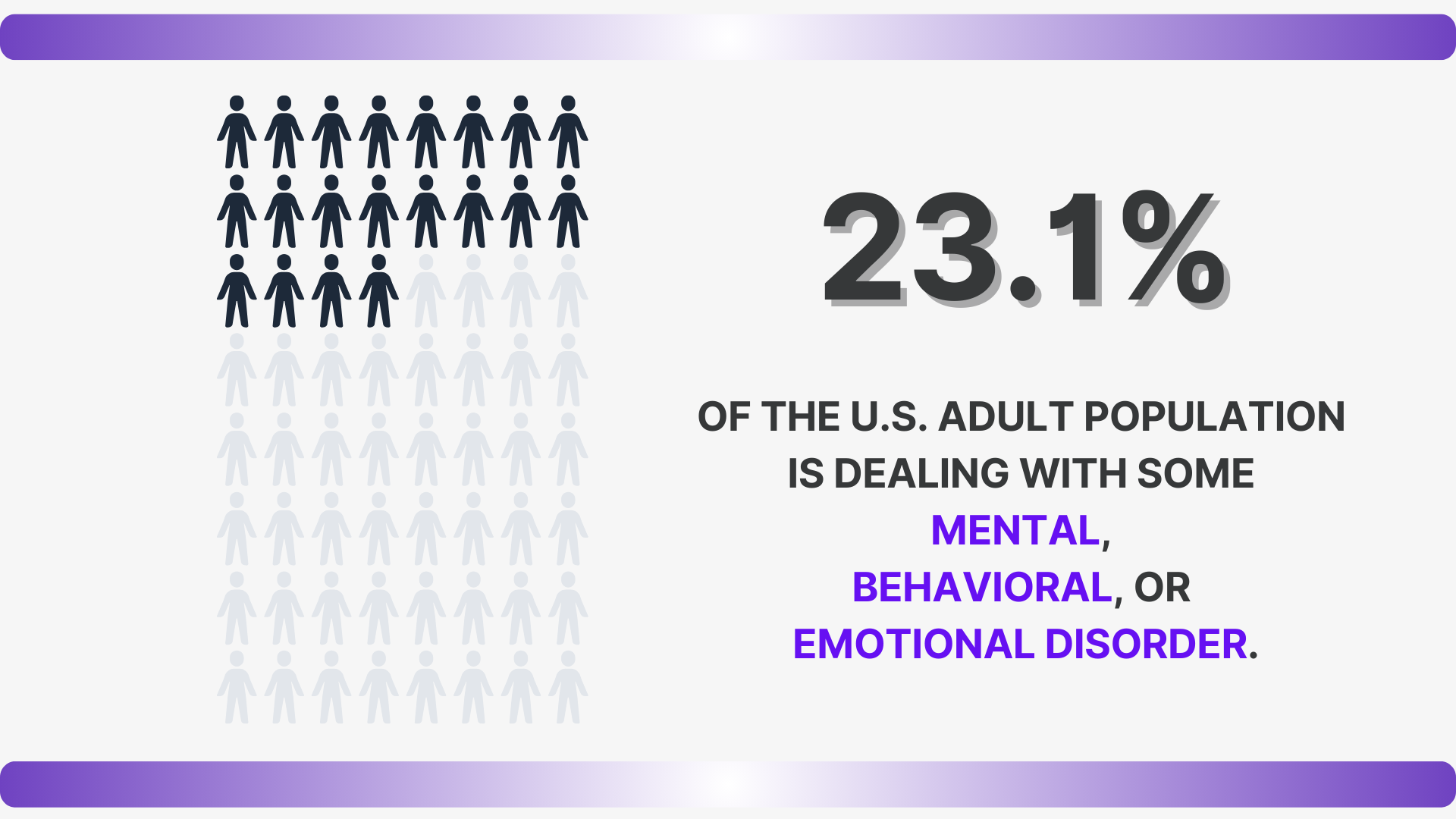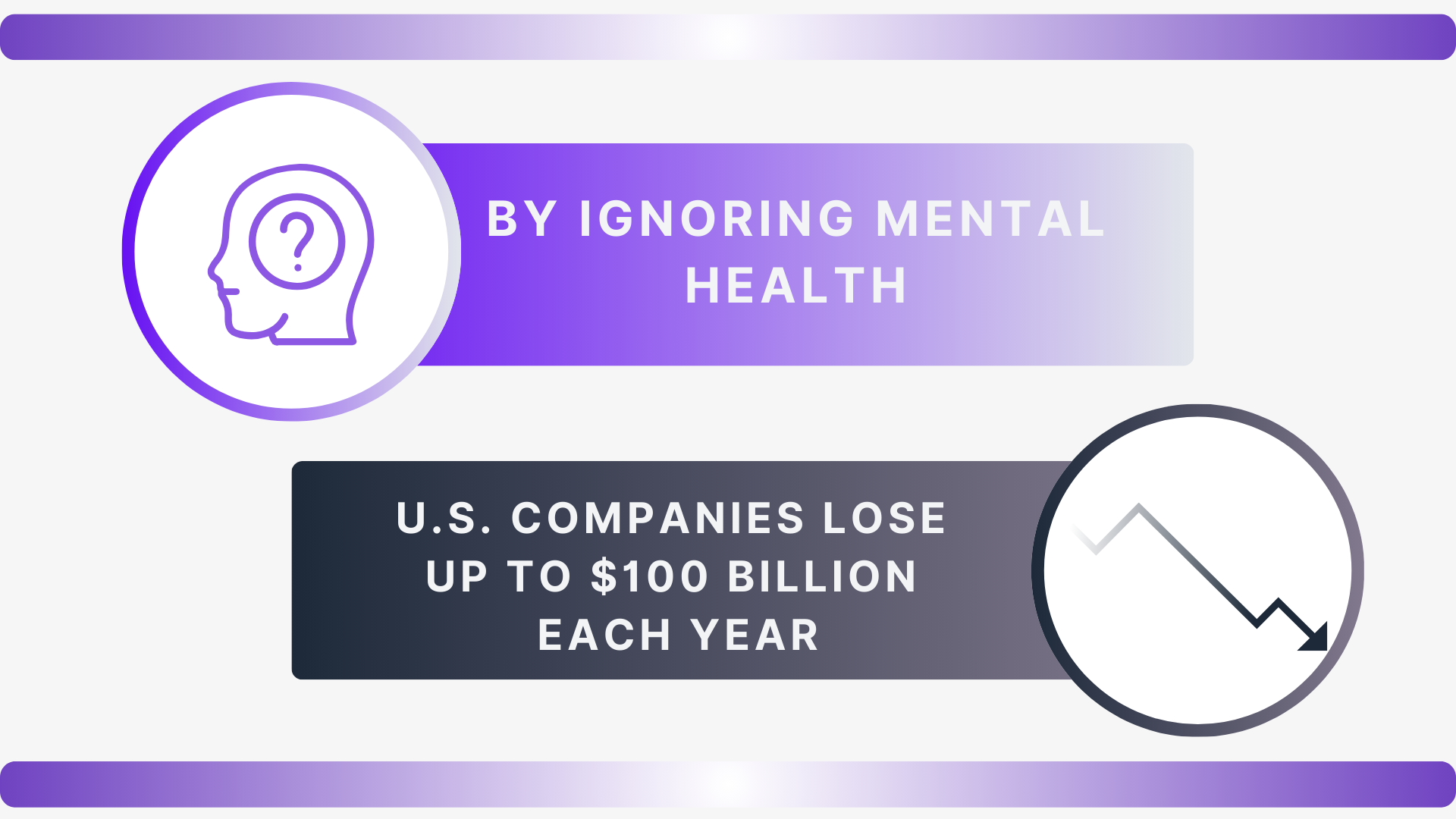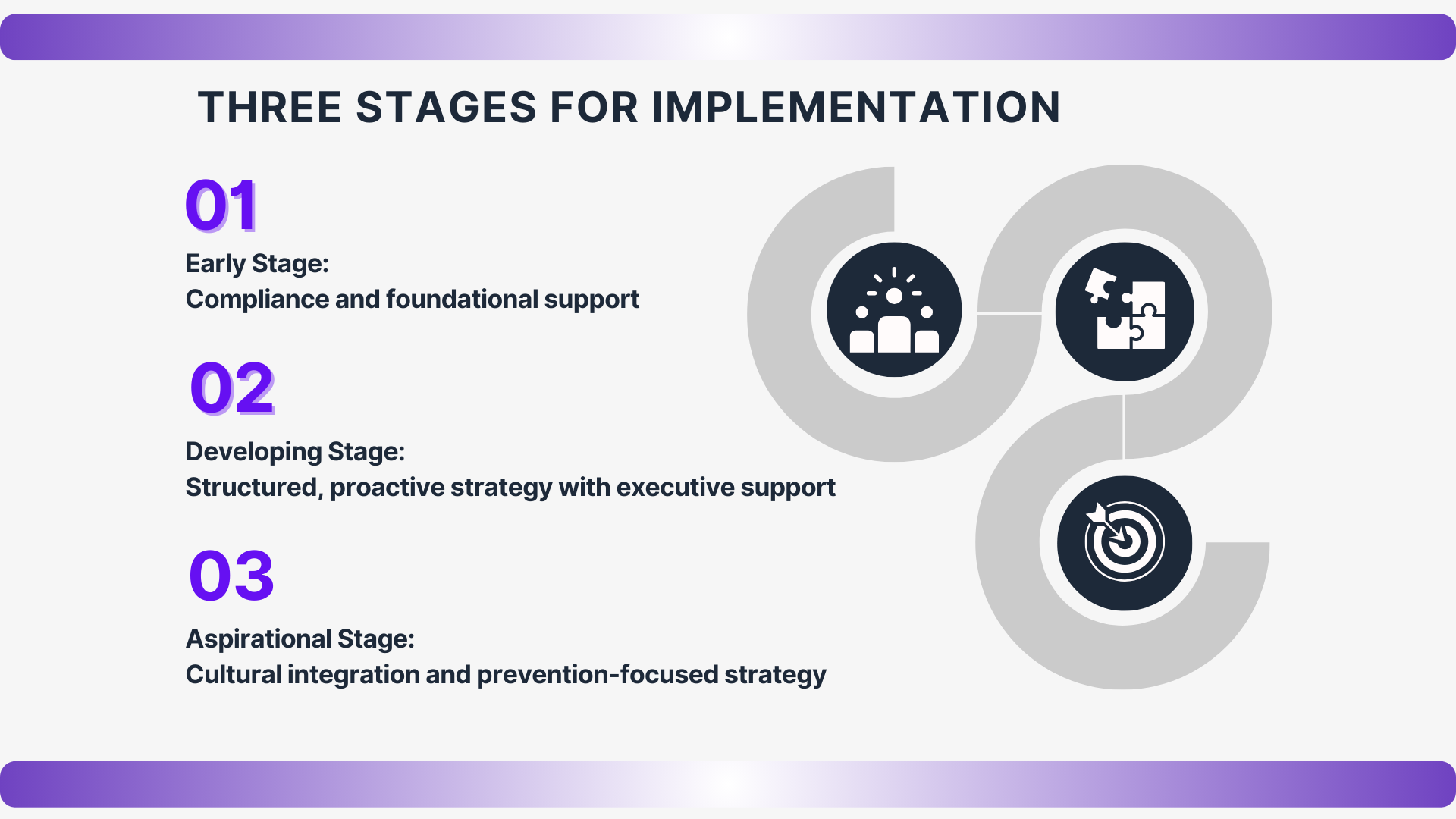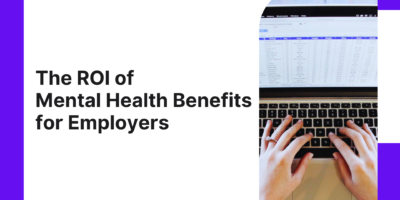
Why We Need Mental Health Support Networks for Men?
The significance of men’s mental well-being extends far beyond the confines of Men’s Mental Health Month initiatives. Yet, why is there still a stigma around it?


Mental Health Counselor at Mastering Anger

Owner & CEO of Bridges of the Mind

Co-Founder & President of CalTek Staffing
The cost of ignoring employee wellbeing is steep, as it results in decreased productivity, higher turnover, and mounting healthcare expenses. As a significant yet overlooked part of this, the business case for mental health benefits in the workplace has long gone from theoretical to quantifiable.
With rising rates of workplace loneliness, anxiety, and depression, these “perks” have transformed into a strategic investment with a measurable impact.
Shortlister explores the ROI of mental health support for employers or how well-implemented benefits can reduce costs, drive retention, and build a more resilient workforce.
Mental health benefits in the workplace refer to the programs, policies, and resources employers offer to support the psychological wellbeing of their employees.
While physical health benefits have long been a standard offering, mental wellbeing only began gaining serious attention in benefits packages in the last few decades.
In recent years, it has further accelerated the conversations around burnout, work-life balance, anxiety, and depression in the workplace, taking them from a place of stigma and into mainstream dialogue.
Benefit providers quickly evolved in response.
Initially, mental health support in the workplace was limited to an EAP, which typically offers counseling and crisis support.
Today, the range of offerings has expanded significantly and may include access to:
This expanding scope of mental health benefits positions employers to create a better work environment amid a challenging mental health landscape.



Nearly one in five adults live with a mental illness.
Data from the National Institute of Mental Health (NIMH) reveals that 23.1% of the U.S. adult population, many of whom are part of the workforce, are dealing with some mental, behavioral, or emotional disorder.
Luckily, we are witnessing a growing awareness of psychological wellness and neurodiversity in the workplace.
Shortlister’s Mental Health Benefits Report reveals that although the pandemic-driven surge has stabilized, mental health programs continue to be one of the most highly sought-after services in employee benefits, reflecting a lasting shift toward prioritizing employee wellbeing.

The bad news is that the current workplace landscape still has barriers like stigma and a lack of access to support.
While conversations around mental health have become more open, many employees still fear judgment or career repercussions if they disclose a mental health condition. Others struggle to find timely, affordable care due to gaps in coverage or provider shortages.
Workplace stress is also high, with Gallup’s employee wellbeing indicators showing a 52% prevalence. The data also reveals that 44% of employees are often worried, 24% experience sadness, and 22% feel anger.
Long hours, digital overload, blurred boundaries between work and life, and pressure to perform contribute to burnout and depression (either depression at work or work depression).
Meanwhile, HR teams are under pressure to support worker wellbeing without always having the training or resources to do so effectively.
The result is a workplace environment where mental health needs are urgent but not always met.
Ignoring these challenges creates vulnerabilities that might not seem urgent immediately, but over time, they erode trust, performance, and the company’s bottom line.
Mental health issues are a business issue.
According to Forbes, by ignoring mental health, U.S. companies lose up to $100 billion each year in absenteeism, reduced productivity, and increased healthcare costs.
Depression alone accounts for around 400 million lost workdays annually.
Globally, the total costs surpass the trillion-dollar mark, showing just how much employers stand to lose when mental health gets overlooked.
The financial repercussions of inertia or indifference are measurable and growing.
Without meaningful investment in employee wellness, businesses are losing significant revenue and actively creating conditions that obstruct employee performance, engagement, and retention.

The business case for mental health benefits has moved them to the forefront of workplace strategy, and for good reason.
Speaking on Mercer’s New Shape of Work interview series, Dr. Wolfgang Seidl, Leader of Workplace Health Consulting, shared that investments in wellbeing programs typically return four to five times their value.
A well-integrated mental health strategy, where providers are aligned, and referral protocols are clear, can lead to meaningful improvements:
These outcomes reflect the core pillars of ROI for mental health programs, including direct medical savings and reduced absenteeism. They are also supported by additional value drivers not captured in the statistics, such as improved productivity, time savings, and employee retention.
When mental health services are coordinated and accessible, employers can see meaningful reductions in healthcare costs. This approach helps prevent issues from escalating, leading to less intensive treatments and lower overall claim costs.
Integrating early intervention, digital tools, or on-site support into the broader care strategy eases the pressure on healthcare plans and creates a more cost-effective benefits ecosystem.
Not all returns are found in health insurance data.
Erika Frieze, psychologist and CEO of Bridges of the Mind, has seen firsthand how prioritizing employee wellbeing pays off in ways other than reduced medical costs.
“The most significant impact came from our focus on workplace culture and professional growth. By creating dedicated wellness spaces for clinicians and monthly team consultations, our productivity increased by 28% while reported burnout decreased.”
Although harder to quantify, these benefits show up in day-to-day performance. Employees who feel supported are less likely to struggle silently or disengage from their work.
Over time, this translates into better productivity, fewer errors, and less time spent managing workplace stress, delivering long-term value that’s often underestimated but deeply impactful.
The 41% reduction in absence rates from Mercer’s findings is a sign of a workforce that feels supported.
Fewer sick days mean more consistent operations and less strain on teams, which, in terms of ROI, can save companies thousands per employee, up to $3,600 annually for each hourly worker and $2,650 for salaried employees, according to Circadian’s report Absenteeism: The Bottom-Line Killer.
Moreover, prioritizing employee mental health makes them more likely to stay with their employer. A Prudential’s Benefits & Beyond study confirms that a holistic benefits approach, including mental health resources, caregiving support, and flexible leave policies, can increase employee loyalty and lead to a more positive perception of their employer.
This approach yielded measurable results for CEO Erika Frieze, who says, “When we implemented comprehensive benefits including five days of sick leave, seven paid holidays, and a $400 annual CE stipend, our retention rate increased by 35% in the first year.”
Measuring the return on investment for mental health benefits requires a comprehensive approach beyond simple financial metrics.
While it’s crucial to track the direct savings, such as reduced healthcare costs and fewer absentee days, the ROI also extends to less tangible but equally important factors like employee engagement, productivity, and retention.
Direct cost savings from mental health benefits are typically the easiest to quantify. They often come from reduced healthcare expenses due to fewer mental health-related claims and less frequent use of emergency healthcare services.
For example, when an employer offers access to a service like counseling or therapy, an individual dealing with a mental health condition can seek help early on before symptoms worsen.
An early intervention helps the company avoid sick leave, temporary replacements, or insurance payouts. At the same time, fewer or lower-cost claims can, in turn, help control the company’s healthcare spending and reduce future premium increases.
Therefore, measuring direct costs can be done by:
While more challenging to quantify, the indirect benefits of mental health programs can significantly affect a company’s bottom line. These typically include improved employee engagement, reduced absenteeism, lower turnover, faster onboarding, and overall productivity growth.
Unlike direct savings, these are often best captured through Return on Experience (ROX), a metric that evaluates the value of ROI tied to employee experience.
ROX [%] = (Net value of experience benefits / Cost of investment) × 100
For example, if a company invests $50,000 in mental health resources and the average cost to replace an employee (including recruiting, onboarding, and lost productivity) is $4,000, even a 10% drop in turnover can bring $40,000 in savings or 80% ROX.
Over time, these indirect benefits can deliver even greater returns since any investment in employee satisfaction and engagement has the potential to lead to better business growth.
Introducing behavioral health initiatives at work demands thoughtful execution, mirroring the sensitivity and complexity of mental wellbeing.
Therefore, an effective strategy should always integrate key components like employee training and leadership support with a comprehensive, multi-faceted implementation.
The best mental health programs are layered, intentional, and built to serve employees’ wide range of challenges. That’s why they require a few main components, including:
Access to a wide net of services
Partnering with reliable mental health companies that offer counseling services, mental health hotlines, and EAPs ensures workers can easily find support when needed.
Flexible work policies
Implementing policies that support flexible work hours and remote work can reduce stress and help employees better manage their work-life balance.
Employee support and education
Providing mental health training for employees and resources that promote awareness helps reduce stigma and encourages workers to seek help and treatment.
Manager training
Equipping managers to recognize signs of distress, support team mental health, and respond appropriately can improve health outcomes and reduce workplace stigma.
Leadership support
Ensuring leadership actively promotes mental health through policy and personal example helps create a supportive environment.
Measurement and feedback
Conducting regular surveys and collecting data can help measure and understand program usage, effectiveness, and areas for improvement.
Once the foundation is clear, the next challenge is building a program that brings these elements to life across the organization.
Deloitte’s blueprint for workplace mental health programs introduces three stages for implementation.
Each represents different levels of commitment, investment, and integration, intending to create a workplace that supports a culture of employee wellbeing.
Early Stage: Compliance and foundational support
The first steps of implementation focus on compliance and risk mitigation. HR leads the effort with basic programs like EAPs and mental health awareness initiatives.
Investment is minimal and aimed at providing essential support.
Developing Stage: Structured, proactive strategy with executive support
The next stage begins to integrate mental health initiatives into a cohesive strategy. Executive support is key, and programs become more connected. Investment grows, and new initiatives focus on psychological safety and employee wellbeing.
Aspirational Stage: Cultural integration and prevention-focused strategy
At this point, mental health becomes embedded in the company culture, focusing on prevention and long-term employee wellbeing. Leadership fosters a supportive environment, and data drives continuous improvement.
This blueprint outlines the progression from foundational support to a fully integrated, prevention-focused mental health strategy.

The benefits of supporting employee wellbeing are widely acknowledged, but the value often becomes clearest through authentic experiences and tangible outcomes.
For Dr. Carlos Todd, a mental health counselor at Mastering Anger, the ROI of mental health benefits has been evident internally and in his client work.
“One of the clearest ROIs we’ve observed is a reduction in employee burnout and interpersonal conflict,” explains Dr. Todd.
“Before implementing structured mental health resources and regular conflict coaching, we noticed recurring breakdowns in team communication that slowed productivity and increased absenteeism.
After integrating monthly mental health check-ins and resilience training, we saw a 30% reduction in interpersonal HR complaints and improved collaboration across departments.”
He also cited a corporate client case that demonstrated measurable improvements, stating, “A six-month investment in on-site emotional wellness workshops and teletherapy access correlated with a 22% drop in short-term disability claims related to stress and a 15% improvement in employee retention among frontline supervisors, a historically high-turnover group.”
Another example is CalTek Staffing, where a comprehensive mental health strategy improved performance and dramatically reduced employee turnover.
“We began investing more intentionally in employee mental health in 2020 after seeing firsthand how burnout was undermining performance and morale”, says co-founder and president Archie Payne. The initiatives introduced mental health days separate from PTO, access to a virtual mental wellness platform, and coverage for therapy and other preventative services as part of the larger employee benefits package.
“The return on these investments exceeded our expectations.
Within six months, the average number of high-quality candidate submissions per recruiter rose from 18 to 23 per month, a 28% increase, without any increase in hours worked. This gain was driven by a combination of reduced sick days and sharper focus during work hours.”
Retention followed a similar upward trend: after turnover peaked at 32% in 2020, the company stabilized at around 15% in 2022.
“This reduction has saved us substantially in recruiting and training costs and helped preserve team cohesion and institutional knowledge, which are difficult to quantify but essential to our long-term success,” concludes Payne.
These examples reflect a broader trend across industries, with leading companies such as Microsoft, Johnson & Johnson, KPMG, and Goldman Sachs acknowledging the need for adequate mental health support.
While their strategies differ, the consistent outcome is clear: investing in mental health generates measurable business value.
Implementing mental health benefits often presents challenges, but understanding the “why and how” is key to overcoming them. The following examples highlight common barriers employers face and strategic solutions that can help navigate them effectively.
| CHALLENGE | STRATEGIC SOLUTION |
|---|---|
| Persistent stigma and limited awareness | Normalize mental health conversations through company-wide education and manager training |
| Budgetary constraints | Focus on low-cost, high-impact initiatives like mental health days, stress management, or app-based tools |
| Low utilization of available resources | Increase engagement by clearly communicating benefits, simplifying access, and incorporating employee feedback into program design |
| Implementation in large or decentralized companies | Integrate mental health programs into corporate policies, ensuring alignment with broader goals and values |
| Lack of leadership commitment | Demonstrate the business case for mental health through ROI and ROX to secure executive-level buy-in |
| Insufficient in-house expertise | Partner with external mental health providers or consultants to build comprehensive, evidence-based programs |
| Generic, one-size-fits-all programs | Tailor the program to reflect the diversity of the workforce, offering culturally competent, inclusive, and flexible support |
| Employee concerns around confidentiality | Implement clear confidentiality policies and provide anonymous feedback tools to build employee trust |
| Difficulty in accessing resources | Consolidate resources into a centralized digital hub or intranet to improve access and user experience |
With the ROI of mental health benefits firmly established, attention now turns to emerging trends.
New technologies and personalized care models are reshaping how support is delivered, making it more accessible and data-driven. Virtual therapy platforms, AI-powered chatbots, and predictive analytics are helping employers identify at-risk employees earlier and connect them to the right resources faster.
At the same time, rising healthcare costs are forcing organizations to be more strategic and seek a balance between financial sustainability and meaningful impact.
These shifts signal a new era of mental health support: one that prioritizes precision, prevention, and long-term value.
In this changing environment, the real question isn’t whether investing in mental health pays off but how long companies can afford to ignore it.
“Looking ahead, I believe the future of workplace mental health lies in proactive, preventative care, embedding emotional wellness into leadership training, team dynamics, and everyday operations,” says Dr. Carlos Todd.
“Mental health can’t be a reaction to crisis anymore.
It must be part of the core culture if companies want resilient, high-performing teams.”
Disclosure: Some of the products featured in this blog post may come from our partners who compensate us. This might influence the selection of products we feature and their placement and presentation on the page. However, it does not impact our evaluations; our opinions are our own. The information provided in this post is for general informational purposes only.
Content Writer at Shortlister
Browse our curated list of vendors to find the best solution for your needs.
Subscribe to our newsletter for the latest trends, expert tips, and workplace insights!

The significance of men’s mental well-being extends far beyond the confines of Men’s Mental Health Month initiatives. Yet, why is there still a stigma around it?

Is a high-earning job worth it if you don’t have enough free time to enjoy its benefits?

What types of resources can employers provide to lessen the burden of lonely individuals in the workplace?

Investing in mental health benefits is no longer a question of whether or how much it pays off but how long companies can afford to ignore it.
Used by most of the top employee benefits consultants in the US, Shortlister is where you can find, research and select HR and benefits vendors for your clients.
Shortlister helps you reach your ideal prospects. Claim your free account to control your message and receive employer, consultant and health plan leads.